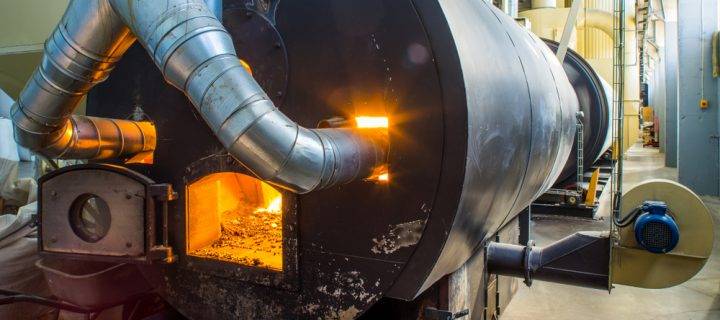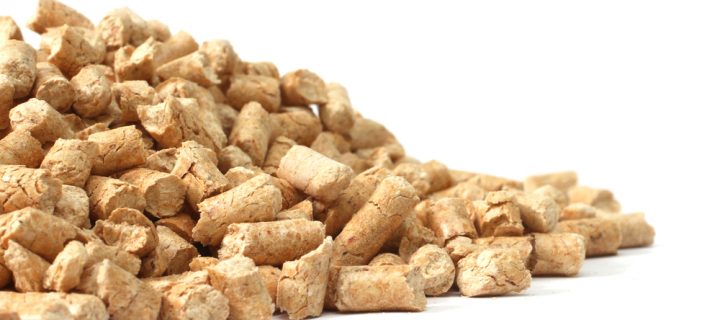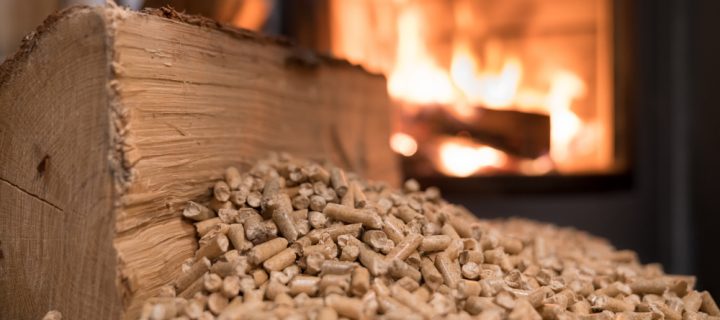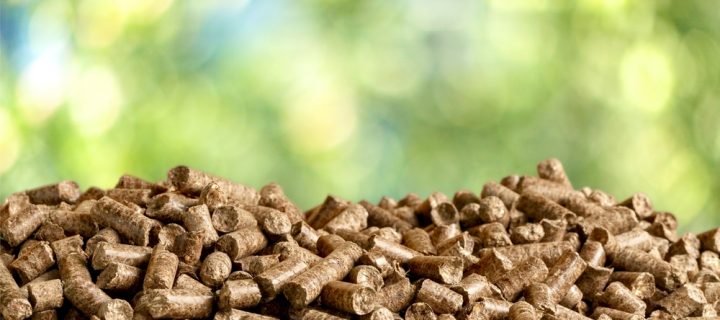For many years P.H Winterton and Son have been providing the finest quality of wood chip pellets which can be used as the sustainable energy source – biomass fuel. We first started producing biomass energy because joineries were struggling to dispose of surplus wood, and because of this, we were able to market this as a product and alternate energy source. Because of their low energy densities, biomass fuels have become one of our most popular products. We only use grade A wood residue from sawmill waste collections which can be burnt in a boiler for industrial heating and electricity. The wood pellets can also be used in specific stoves for the heating of homes. Why Should I Use a Pellet Stove? Here are six advantages of using a pellet stove – 1. Temperature Adjustment, Programming and Remote Control – Some models of pellet stove allow you to adjust the temperature with a remote control or a room thermostat. Other models can be programmed or operated daily or monthly via text message or a mobile app. The pellet stove will start to burn and go out without you having to do anything, depending on the programme you choose. 2. Up to 90% Efficiency – Pellet stoves can be up to 90% efficient, meaning only 10% of the energy generated by the wood pellets (biomass fuel) is lost in the chimney. 3. No Special Chimney Required – A pellet stove that is equipped with an active smoke extraction system, meaning there is no need for a special chimney because the combustion gases can be blown into an existing chimney. The smoke can also be extracted by using an ordinary thin tube that runs horizontally through an outer wall, even when it is kinked. 4. Autonomy from 12-36 Hours – The pellet reserve in your wood pellet stove has an autonomy of roughly 12 hours at full power. This means your stove must be filled manually once or twice a day. 5. Convenient and Cheap Fuel – P.H Winterton’s biomass fuel is extremely cost-effective compared with other fuels. The consumption of pellets depends on the size and insulation of the room to be heated, on the heating time plus the desired...
Read Moreabout The Importance of Biomass Fuel Wood PelletsRecent research from specialists Enviva has shown how the use of biomass fuel and wood pellet electricity will impact on the environment. The study helped to explain the carbon impact of wood pellet energy plus its sustainability. As part of the research, it was revealed the greenhouse gas impacts of wood pellets plus their emissions from the wood pellet supply chain. They also compared the performance of electricity generated using wood pellets against other fuels such as coal and natural gas. For this blog, P.H Winterton is going to look at the Enviva report in greater detail and explain the many reasons to use biomass fuel. Why Biomass Fuel Is More Important Than Ever For steady-state working forests, you will get the same net climate impact result, no matter the sort of assumptions used for carbon accounting. Crediting biogenic carbon uptake before combustion will present the same result for working forests plus the carbon-debt accounting approach. This is assigned at the time of combustion and will be repaid as the forest regrows. Renewable, baseload bioenergy enables the renewable electric grid. The carbon benefits of good biomass fuel are clear. The report explains that wood sourced sustainably is a by-product traditional timber harvest where the land returns to forested use. Biomass is essentially a natural storage vessel for energy from the sun with trees from working forests continuously recycling carbon from the atmosphere to trees and back. In contrast, fossil fuels represent a one-way trip for carbon from geologic storage to the atmosphere. As long as the requirements for quality biomass are met, greenhouse gas emission can be mitigated by substituting bioenergy for fossil fuels. Get in Touch for More Information If you would like to know more about biomass fuel, please do not hesitate to contact P.H Winterton and Son today. We are proud to be part of the UK government Biomass Supplier List; meaning you will always get the finest wood pellets from...
Read Moreabout How Biomass Fuel Impacts the EnvironmentSustainability is more important than ever with the negative effect of climate change on the planet; with wood pellet stoves being the most environmentally friendly heating option. P.H Winterton and Son are the leading suppliers of biomass fuel, with our wood pellets sourced from our sawmill waste collection service. Traditional wood-burning stoves have a number of benefits, using a renewable fuel source that will reduce your heating bills. The most effective pellet stoves can be up to 90% more efficient than standard wood burners because they burn pellets that contain a mixture of sawdust, bark and other biodegradable materials. The level of airborne particulates that the pellets produce is also relatively low. Just like a gas boiler, you can switch pellet burners on and off on-demand giving you an instant source of heat. The burner can be set to your specific requirements, which means you get the most out of the appliance. How Do Wood Pellet Stoves Work? Pellet stoves burn compressed wood or biomass pellets creating a source of heat by slowly feeding fuel automatically from the storage container into the burn tray. A constant flame is then created and monitored to ensure you are getting maximum efficiency. The built-in hopper allows pellet burners to operate autonomously for about 12 hours under full load. One of the main benefits of pellet stoves is how easy they are to use. With automatic ignition, you can be assured your pellet burner will only start burning when needed, which saves you money in the long-term. They will produce very small amounts of ash and chimney creosote that reduces the number of times your chimney needs cleaning. Regarding fuelling your pellet stove, pellets are convenient and cost-effective when compared to other fuel sources. Reasons to Use Pellet Stoves Fuel will only need replenishing once a day, whereas appliances fuelled by wood, which needs regular top-ups every few hours. Pellets release much lower emissions when compared to fossil fuels Pellet stoves are highly efficient due to the even distribution of the heat by an extractor. Get in Touch for More Information If you have any questions about biomass fuel and wood pellet stoves, please do not hesitate to contact us...
Read Moreabout What are the Advantages of Wood Pellet Stoves?P.H Winterton is one of the countries leading suppliers of biomass fuel, which is fueled by wood pellets recycled from our sawmill waste collection service. For this blog, we are going to talk you through how wood pellet stoves work and why you should consider using one. How Do Wood Pellet Stoves Work? Wood pellet stoves do look similar to wood-burning stoves and fireplaces but they are a more environmentally friendly and low-cost heating option. In a time when climate change and environmental awareness is at the forefront of many home and business owners minds, they have become even more popular. The wood pellet that power the stoves look similar to rabbit food and are considered eco-friendly because they are cheap and easy to manufacture. They also have a very low pollution rate. The Mechanics of Wood Pellet Stoves Wood pellet stoves operate with electricity, with pellets loaded into the hopper which is either located on the top or bottom of the unit. The auger is a motorised device which delivers the pellets from the hopper into the burn pot with the auger’s speed determining the stove’s temperature. The burn pot is based in the combustion chamber and is then ignited creating a hotter flame because of how heavily compressed and dense and low in moisture the pellets are. The pot serves as a carburettor for the stove, mixing the air and fuel which creates combustion with the ashes from the burnt pellets captured in an ash pot which needs cleaning periodically. Unlike a regular fireplace, pellet stoves heat a room through convection, which is the transmission of heat that occurs from a forced combination of cool and hot air currents. The convection blower pulls cool air in from the room, passing over the fire in the burn pot and makes the flame hotter enabling the pellets to burn evenly and efficiently. The heated air will move across a heat exchanger, designed to transfer clean air into your home through the room blower. This heat exchanger acts like a furnace when used in combustion because its located in the combustion chamber preventing the outside of the stove becoming too hot. The exhaust blower will push out gases from a...
Read Moreabout Wood Pellet Stoves Explained by PH WintertonA new strategy set for 2022 has been announced by the UK Government that looks set to support the use of biomass fuel. The UK Renewable Energy Association has welcomed this announcement, reiterating how important bioenergy is to a renewables revolution. P.H Winterton and Son are one of the leading providers of biomass fuel to clients all over the country. Here we will look at the announcement in greater detail and how biomass fuel could become more widely used. How Bioenergy Could Affect Climate Change The UK Department for Business, Energy and Industrial Strategy (BEIS) is putting together a new bioenergy strategy in response to the Committee on Climate Change’s 2020 progress report, which was released in June. The report detailed progress for the UK in reducing emissions and looked at the government’s climate change mitigation activity. This report called for the UK to refresh its bioenergy strategy to include the best uses of biomass fuel and waste resources through until 2050. This includes wood in construction and the wider bio-economy, the role of carbon capture and storage (CCS) plus clear dates for CCS to be implemented in biomass and waste facilities. The BEIS intends to publish a new biomass energy strategy in 2022, which will build on the previous strategy released in 2012. It will aim to bring together many departments whose policies for net-zero involving the use of sustainable biomass. Nina Skorupska, chief executive of the Renewable Energy Association (REA) commented, “We note the Government’s response to the CCC’s report and strongly welcome the government’s new commitment to delivering a revised Bioenergy Strategy for the U.K., in line with the recommendation of the Committee on Climate Change and building on the REA’s own industry-led Bioenergy Strategy, published last year.” Leading Supplier of Biomass Fuel P.H Winterton currently offers two different types of biomass fuel, P16 grade (smaller size of wood chip) plus P35 grade (a grade wood with no contaminants present). We use Grade-A wood residue from sawmill waste collections which can be burnt in a boiler for industrial heating and electricity. Get in touch today to find out...
Read Moreabout How the New Government Bill Affects Biomass Fuel




